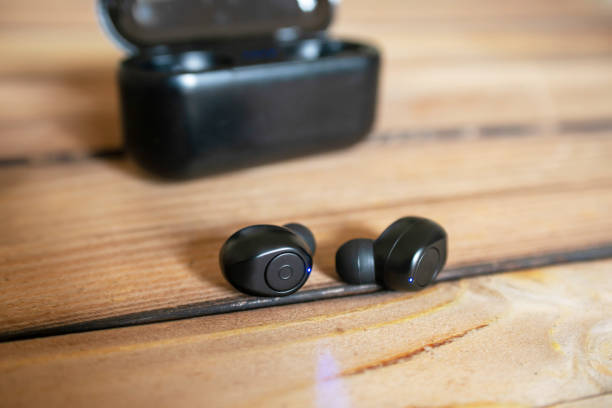In the age of technology, where wireless is the new black, Bluetooth earphones have found their way into the lives of millions. These devices offer a perfect blend of convenience, style, and crisp, high-quality audio that leaves traditional wired earphones trailing in their wake. Yet, a critical factor for many users when deciding on their Bluetooth earphones of choice is the battery life.
This element is often seen as the Achilles heel of wireless devices, with questions of capacity, longevity, and recharging times commonly at the forefront of discussions. In this article, we’ll delve into the world of Bluetooth earphone batteries, unpacking what makes them tick and how to ensure they’re performing at their very best.
Understanding the Basics: Battery Life and Power Capacity
Batteries, the invisible powerhouses in Bluetooth earphones, are often misunderstood. Knowing more about their lifecycles, mAh ratings, and how usage impacts their performance can significantly improve your wireless experience.
Battery Life
Battery life refers to the amount of time your earphones can operate before they need to be recharged. This duration is influenced by various factors, such as the volume at which you’re playing music, whether you’re using them for calls, or the earphones’ standby time when not in use. Generally, most Bluetooth earphones offer anywhere between 5 to 24 hours of battery life, though this varies from model to model.
Power Capacity
Power capacity, expressed in milliampere-hours (mAh), defines the amount of energy a battery can store. This is often used as an indicator of how long a battery can last before it needs to be recharged. For instance, a battery with a higher mAh rating will typically have a longer lifespan per charge compared to one with a lower rating.
However, the capacity isn’t the only factor that influences battery life. The efficiency of the device’s components also plays a significant role. Two earphones with the same battery capacity might offer different battery life due to varying energy efficiency levels.
The real-life performance of these batteries can also be impacted by usage habits. Over time, batteries undergo a process called cycling, where they are charged, depleted, and then recharged. Frequent full discharges can lead to a reduction in overall battery health, thereby affecting their capacity and, in turn, the life of your earphones.
The Lithium-Ion Tale: A Peek into the Most Common Battery Type
Lithium-ion batteries power most Bluetooth earphones. It’s essential to understand how these batteries function, their advantages, and why they have become the industry’s standard.
How Do Lithium-Ion Batteries Function?
Li-ion batteries function based on the movement of lithium ions from the negative electrode to the positive electrode during discharge and vice versa when charging. This process is facilitated by an electrolyte, a substance with a high concentration of lithium ions.
When you’re using your Bluetooth earphones, the stored energy in the battery is being consumed as lithium ions move from the negative electrode (anode) through the electrolyte to the positive electrode (cathode), creating an electric current that powers the device. During charging, an external power source applies an electric current that reverses this ion flow, restoring energy to the battery.
Advantages of Lithium-Ion Batteries
One of the key advantages of Li-ion batteries is their energy density, which is a measure of how much energy a battery can store for a given size. High energy density means longer battery life for your earphones without significantly increasing their size or weight.
Li-ion batteries also have a low self-discharge rate, which is the rate at which a battery loses energy when not in use. This means that your Bluetooth earphones will retain their charge for a longer period when not in use, compared to devices powered by other battery types.
The fact that Li-ion batteries are immune to the “memory effect,” which occurs in some rechargeable batteries and causes them to lose their maximum energy capacity if they are frequently recharged after being only half discharged, is another noteworthy advantage.
Why Are They Industry Standard?
Lithium-ion batteries’ combination of high energy density, low self-discharge rate, and lack of memory effect makes them an excellent choice for portable electronics, including Bluetooth earphones. Their versatility and performance have solidified their position as the industry standard for such devices.
While Li-ion batteries are not without their disadvantages, such as potential safety risks if improperly handled or disposed of, their benefits far outweigh these drawbacks in most applications. In our Bluetooth-enabled world, understanding the workings of these batteries is key to optimizing your wireless audio experience.
Sustainable Power: Maximizing Battery Life and Health
The way you handle and charge your Bluetooth earphones can have a significant impact on the battery’s lifespan. Discover tips and tricks to prolong the health of your Bluetooth earphone batteries, ensuring they stay potent for longer.
Avoid Complete Discharges
Frequently allowing your earphone battery to fully discharge before recharging can lead to a reduced lifespan. Lithium-ion batteries, in particular, prefer partial discharges. Try to keep the battery level between 20% and 80% most of the time for optimum health.
Keep Them Cool
Batteries despise heat. High temperatures can speed up the self-discharge rate and even cause irreversible damage. Therefore, store your Bluetooth earphones in a cool, dry place when not in use.
Unplug Once Charged
Although most modern devices are designed to stop charging once the battery reaches 100%, it is still good practice to disconnect your earphones once they’re fully charged. This helps to avoid potential overheating and prolongs battery health.
Turn Off When Not in Use
If you’re not using your Bluetooth earphones, switch them off. Keeping your earphones on when not in use will continue to drain the battery, reducing its overall lifespan.
Regular Use is Good
Regular use of your Bluetooth earphones is beneficial for the battery’s health. Long periods of inactivity can lead to battery capacity loss. So, ensure to use and recharge your earphones regularly.
Software Updates
Manufacturers often release updates that optimize battery usage and resolve issues that might be causing excessive battery drain. So, always keep your device software up-to-date.
Following these tips can help maximize your Bluetooth earphone battery’s life and health, offering you a superior, uninterrupted audio experience. Remember, a little care can go a long way in keeping your wireless devices performing at their best.
Future Technologies: A Glimpse into Next-Gen Earphone Batteries
As the world evolves, so too does technology. In this section, we’ll explore what the future might hold for Bluetooth earphone batteries, including exciting advancements that promise to revolutionize our wireless experiences.
1. Advanced Battery Technologies
Emerging battery technologies promise to deliver higher capacities and faster charging times. For instance, solid-state batteries, which replace the liquid electrolyte in traditional batteries with a solid one, could provide greater energy density and safety. This means longer battery life without increasing the size of the earphones.
2. Energy Harvesting
Energy harvesting technologies, which generate power from ambient sources such as light, heat, or motion, could also feature in future Bluetooth earphones. This could reduce the frequency at which we need to charge our devices or even eliminate charging altogether for certain low-power applications.
3. Graphene Batteries
The introduction of graphene batteries could revolutionize the wireless industry. Graphene batteries boast significantly faster charging times and higher capacities compared to their lithium-ion counterparts. Their incorporation in Bluetooth earphones could mean dramatically reduced charging times and an impressive increase in battery life.
4. AI-Driven Power Management
With the rise of artificial intelligence (AI), future earphones could come equipped with smart power management systems that optimize battery usage based on your habits. For instance, your earphones could learn to enter a low-power mode when they detect that you’re not using them.
5. Wireless and Quick Charging Technologies
Wireless charging is already a feature in some high-end earphone models, but future advancements could make it even more efficient and widespread. Moreover, quick charging technologies, which allow devices to charge in significantly less time, will likely continue to improve, further enhancing the user experience.
Conclusion
It’s clear that Bluetooth earphone batteries play a pivotal role in our wireless audio experience. Understanding their inner workings can empower users to maximize their devices’ lifespan and performance. As we eagerly anticipate the future of this technology, one thing remains certain: the rise of Bluetooth earphones shows no sign of slowing down. With a bit of knowledge and care, we can ensure that our devices keep the music playing – anytime, anywhere.


